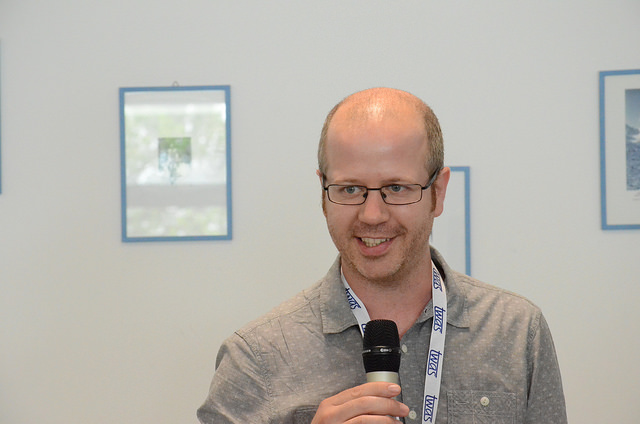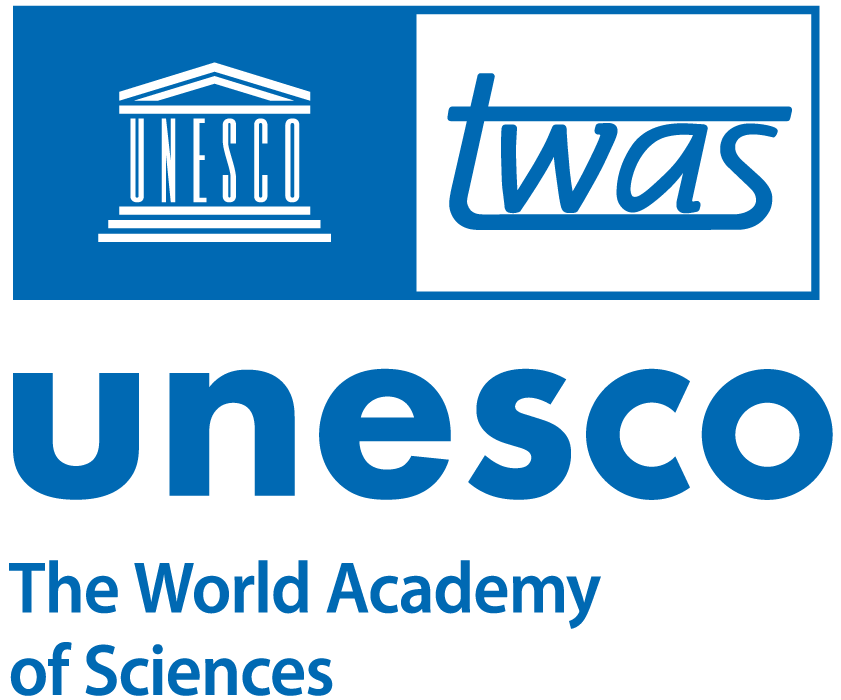![Looking east on Mt. Paektu. [Photo: James Hammond]](/sites/default/files/inline-images/paektu_1_0.jpg) Scientists typically study volcanoes because eruptions can harm people, disrupt travel, and interfere with the global climate. But on the Korean Peninsula, there is an obstacle that complicates this obvious area of research collaboration: geopolitical tension.
Scientists typically study volcanoes because eruptions can harm people, disrupt travel, and interfere with the global climate. But on the Korean Peninsula, there is an obstacle that complicates this obvious area of research collaboration: geopolitical tension.
Several volcanoes on the Korean Peninsula and north east China are unique, and the largest of them all, Mt. Paektu, is responsible for what’s known as the Millennium eruption in 946 C.E. That eruption created a crater that is five kilometers wide on the border of China and the Democratic People’s Republic of Korea (DPRK), and spread ejecta so far into the stratosphere that it came down half a world away in Greenland, where it can be found today deep in the ice. The volcano has shown recent signs of unrest, such as a marked increase in earthquakes from 2002 to 2005.
But because it’s on the border of China and North Korea, Mt. Paektu is difficult to study. At the 2018 AAAS-TWAS Course in Science Diplomacy, volcanologist James Hammond described how he and his colleagues in the UK found a way to collaborate with the nation’s scientists there. As a result, an international team imaged the crust beneath Mt. Paektu. The work got wide acclaim, not just for the research, but as a standout example of science diplomacy.
“Rare good news stories about North Korea came of it,” said Hammond, a researcher at Birkbeck, University of London. “There’s a caricature of North Korea as being a bit strange. But the press presented our work positively focusing on how North Korea were opening to collaboration. Even Fox News and the Daily Mail had positive stories.”
Hammond’s presentation was a highlight of the event. The course was the fifth organised by the American Association for the Advancement of Science (AAAS) and TWAS at the Abdus Salam International Centre for Theoretical Physics campus in Trieste, Italy. Held 20-24 August, it convened over 40 scientists and government officials from over 20 countries including Bangladesh, Colombia, Malaysia, Sudan and Uganda.
 During the week-long course, participants examined the complex workings and potential value of science diplomacy for addressing global challenges and improving relations among nations. They heard presentations, had discussions, and took part in simulations designed to help understand the dynamic relationships between science and diplomacy. Hammond’s lecture about his work in DPRK was part of a series about doing scientific collaborations amid political tensions.
During the week-long course, participants examined the complex workings and potential value of science diplomacy for addressing global challenges and improving relations among nations. They heard presentations, had discussions, and took part in simulations designed to help understand the dynamic relationships between science and diplomacy. Hammond’s lecture about his work in DPRK was part of a series about doing scientific collaborations amid political tensions.
Hammond explained that Mt. Paektu is also culturally important to North Korea. It’s the highest point on the peninsula, and it can be found on North Korea's national emblem and even on its postage stamps.
In order to make the collaboration work, too, the researchers had to keep on their toes. The international team was invited to study the volcano in 2011 with just one week’s notice. They also, because of the DPRK’s nuclear tests and changing geopolitics, had to comply with new sanctions, which AAAS and the Royal Society helped the researchers navigate.
They arrived as the first Western scientists to visit the observatories at the volcano. They learned about the decades of North Korean research on it, and they were able to agree on a scientific objective that could serve as the basis of a joint international project. The North Koreans, he said, went out of their way to accommodate them, building houses just for the seismologists.
“Through communicating the scientific goals about why it’s important to look at areas away from a volcano, we got access to key sites, including North Korean villages,” he said. “We put solar panels on top of houses during winter for monitoring purposes. Some of these villages hadn’t seen westerners before. We formed great relationships with the families there, they made us lunch, gave us locally made blueberry wine and made us feel very welcome.”
The courage to act
![Participants in the AAAS-TWAS Science Diplomacy Course interact during a simulation of a chemical weapons crisis. [Photo: C. Serra]](/sites/default/files/inline-images/scidip18_participants.jpg) Part of bridging the gap between science and diplomacy is communicating across fields. Frances Colón, formerly a high-level science policy adviser at the U.S. Department of State, discussed how important it is for scientists to learn how to communicate their science understandably, to policymakers, politicians and to the general public, especially in an environment where science is being distorted for political ends.
Part of bridging the gap between science and diplomacy is communicating across fields. Frances Colón, formerly a high-level science policy adviser at the U.S. Department of State, discussed how important it is for scientists to learn how to communicate their science understandably, to policymakers, politicians and to the general public, especially in an environment where science is being distorted for political ends.
“Public communication about your science is not prestigious,” Colón said. “But those people you don’t want to talk to pay for your grants.”
Colón, now the CEO of Jasperi Consulting, discussed using her own experiences in diplomacy to address science issues in the community after she stepped down as deputy science adviser to the U.S. Secretary of State in 2016. In one instance, she penned an essay for The Hill where she described how the Trump Administration’s anti-science agenda led to the departure of all senior scientists from her former office. She felt it was important to speak out about it as a scientist and a citizen.
Colón also spoke about how scientists and science diplomats can turn to grassroots activism and organizing in an effort to make their needs and the importance of science known. She asked the audience about their engagement: Who has written a book? Contributes to a blog? Listens to or has been on a podcast? Who has taken part in a march or called a legislator?
The point, she said, was to make the participants aware of ways scientists can remain active citizens of their countries.
“If you’re not out there communicating about your science, then the mic is open, and there is going to be someone to fill that vacuum,” Colón said, adding that this is how climate change denialists, for example, are able to grab attention. “There is a surge of science communication happening, but we are late. The anti-science voice is a lot louder.”
The lesson of global development
Nikhil Seth, the director of the United Nations Institute for Training and Research (UNITAR) gave the keynote address, appealing to those present to not just understand diplomacy, but provide training and education for diplomats to work with the science community.
“Our diplomats for the 21st century must work with multiple networks and actors,” Seth said. “It is no longer wily statecraft that will win the day, but the intellectual and knowledge skills to anticipate and understand the world of constant change.”
![Participants in the AAAS-TWAS Science Diplomacy Course in 2018. [Photo: C. Serra]](/sites/default/files/inline-images/scidip18_all.jpg) He presented the UN Sustainable Development Goals as an example of why science diplomacy is important. Scientists and diplomats will have to work together in order for the world to reach a level of prosperity that can be maintained long-term.
He presented the UN Sustainable Development Goals as an example of why science diplomacy is important. Scientists and diplomats will have to work together in order for the world to reach a level of prosperity that can be maintained long-term.
Science as a tool for diplomacy, he said, is powerful because the methods of science have long fostered cooperation and built bridges between cultures. Diplomacy for science is just as important, because challenges such as food security and healthy oceans will require expertise that transcends borders.
“Getting the optimum mix of leadership, judgment, continuity and change is crucial,” Seth said. “Everything today is different and tomorrow will change even more disruptively. Individuals, institutions and nations that are nimble and accept change will prosper. Those who resist will flounder – that is the lesson of the 20th century.”
Those who took part in the course lauded the event’s participatory spirit, especially after the simulation. Participant Yolande Harley of the University of Cape Town, South Africa, said that she learned that researchers and diplomats occupy different professional frameworks, and trying to adapt each others’ perspectives requires bravery. Researchers in particular need courage to venture out of the lab to engage in public affairs.
“Be brave. This came through in all of these speakers’ talks, they’re so brave," Harley said. “If we want to engage with people who make a difference, we have to be kind and we have to be human. We’re doing those things for a reason.”
Sean Treacy

